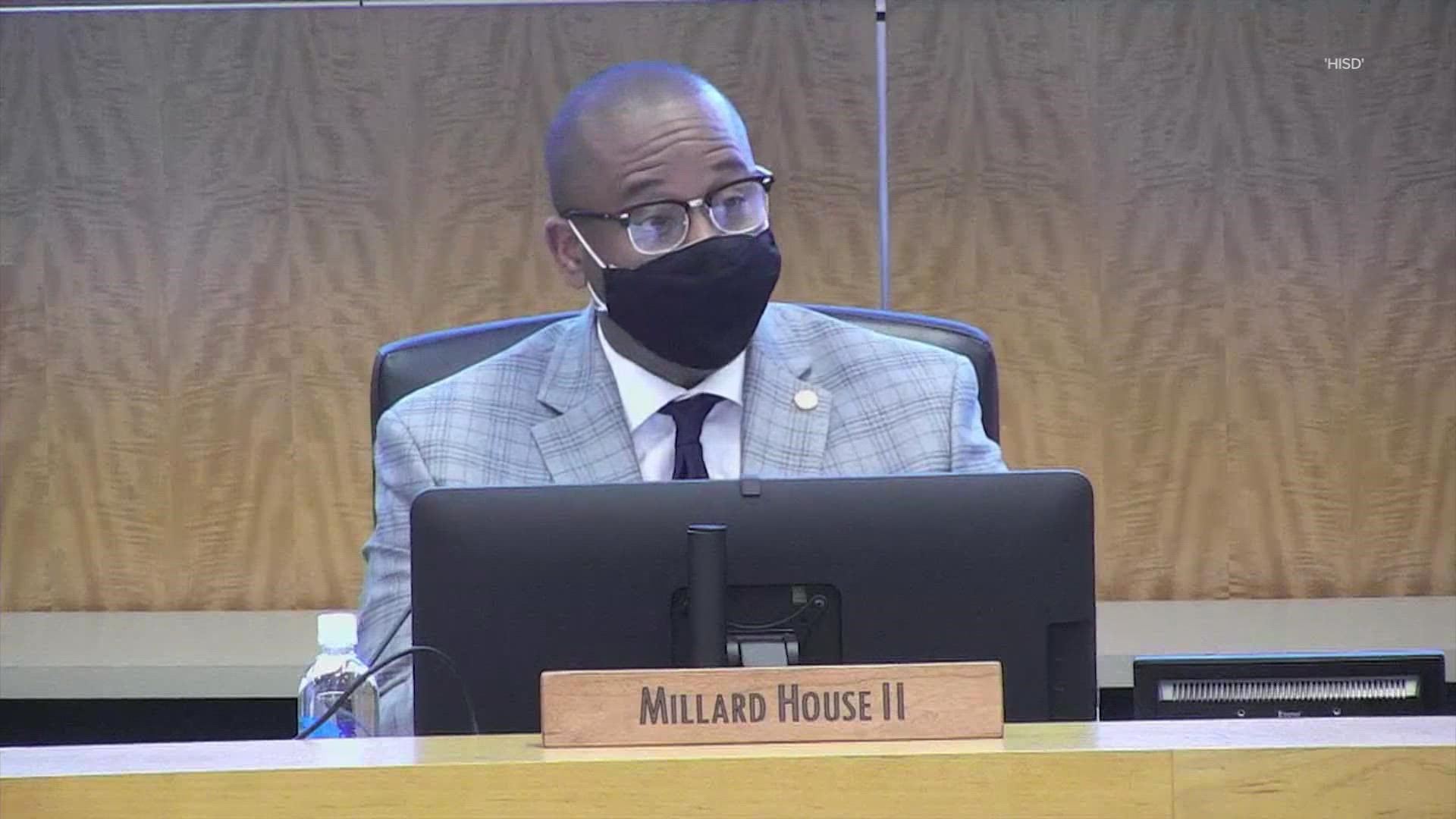AUSTIN, Texas — The Texas Education Agency updated its guidance for the upcoming school year. We've posted the full guidance below from the agency, and also contacted them about three points from it.
Under 'required actions,' there wasn't information about notifying parents of confirmed cases. A representative from the TEA confirmed that's not in their guidance, but they do require schools to report positive cases to the state health department and local health authorities.
Guidance also says that schools don't have to do contact tracing after positive cases are confirmed. While true, the TEA tells us that if schools become aware that a student was in close contact with someone infected, they must notify the student's parents.
Also, per the new guidance, if a school does contact trace, parents still have the option to send a child to school if they are a close contact with someone infected.
The TEA is allowing for limited remote instruction for students who are sick with COVID-19 or have tested positive, or for those who have come in contact with someone who is positive.
It's important to note that what the TEA released were guidelines and at least a couple school districts have already made their plans clear, including Fort Bend ISD and Austin ISD.
Under the TEA’s guidance, school districts are not allowed to require students or staff to wear masks. Schools can allow individuals to wear a mask if they choose to do so.
But Houston ISD may go against that. Superintendent Millard House II on Thursday that the district plans to vote on a mask mandate for this school year. That vote is expected on Thursday.
The guidance in this document is authorized by Executive Order GA-38, which has the effect of state law under Section 418.012 of the Texas Government Code. Executive Order GA-38 provides TEA with the legal authority to publish requirements for the operation of public school systems during the COVID-19 pandemic. This document takes effect immediately, replacing all prior guidance. TEA recommends that public school systems consult with their local public health authorities and local legal counsel before making final decisions regarding the implementation of this guidance.
This guidance addresses:
• On-campus instruction
• Non-UIL extracurricular sports and activities
• Any other activities that students must complete
For guidance on matters related to school system staff, please refer here.
Additionally, as a reference for practices recommended by the CDC, see here.
Required actions if individuals with test-confirmed cases have been in a school
1. If an individual who has been in a school is test-confirmed to have COVID-19, the school must notify its local health department, in accordance with applicable federal, state and local laws and regulations, including confidentiality requirements of the Americans with Disabilities Act (ADA) and Family Educational Rights and Privacy Act (FERPA).
2. Upon receipt of information that any teacher, staff member, student, or visitor at a school is test-confirmed to have COVID-19, the school must submit a report to the Texas Department of State Health Services via an online form. The report must be submitted each Monday for the prior seven days (Monday-Sunday).
Masks
Per GA-38, school systems cannot require students or staff to wear a mask. GA-38 addresses government-mandated face coverings in response to the COVID-19 pandemic. Other authority to require protective equipment, including masks, in an employment setting is not necessarily affected by GA-38.
School systems must allow individuals to wear a mask if they choose to do so.
Students who have COVID-19
As provided in this Department of State Health Services (DSHS) Rule, school systems must exclude students from attending school in person who are actively sick with COVID-19 or who have received a positive test result for COVID-19. Parents must ensure they do not send a child to school on campus if the child has COVID-19 symptoms or is test-confirmed with COVID-19, 2 until the conditions for re-entry are met. See the DSHS rule for more details, including the conditions for ending the exclusion period and returning to school.
During the exclusion period, the school system may deliver remote instruction consistent with the practice of remote conferencing outlined in the proposed Student Attendance Accounting Handbook (SAAH) rules, as described here.
To help mitigate the risk of asymptomatic individuals being on campuses, school systems may provide and/or conduct recurring COVID-19 testing using rapid tests provided by the state or other sources. Testing can be conducted with staff. With prior written permission of parents, testing can be conducted with students.
Students who are close contacts
As a reference, close contact determinations are generally based on guidance outlined by the CDC, which notes that individuals who are vaccinated are not considered close contacts. Given the data from 2020-21 showing very low COVID-19 transmission rates in a classroom setting and data demonstrating lower transmission rates among children than adults, school systems are not required to conduct COVID-19 contact tracing. If school systems are made aware that a student is a close contact, the school system should notify the student’s parents.
Parents of students who are determined to be close contacts of an individual with COVID-19 may opt to keep their students at home during the recommended stay-at-home period.
For individuals who are determined to be close contacts, a 14-day stay-at-home period was previously advised by the CDC based on the incubation period of the virus. CDC has since updated their guidance, and the stay-at-home period can end for students experiencing no symptoms on Day 10 after close contact exposure, if no subsequent COVID-19 testing is performed.
Alternately, students can end the stay-at-home period if they receive a negative result from a PCR acute infection test after the close contact exposure ends. During the stay-at-home period, the school system may deliver remote instruction consistent with the practice of remote conferencing outlined in the proposed Student Attendance Accounting Handbook (SAAH) rules, as described here.

